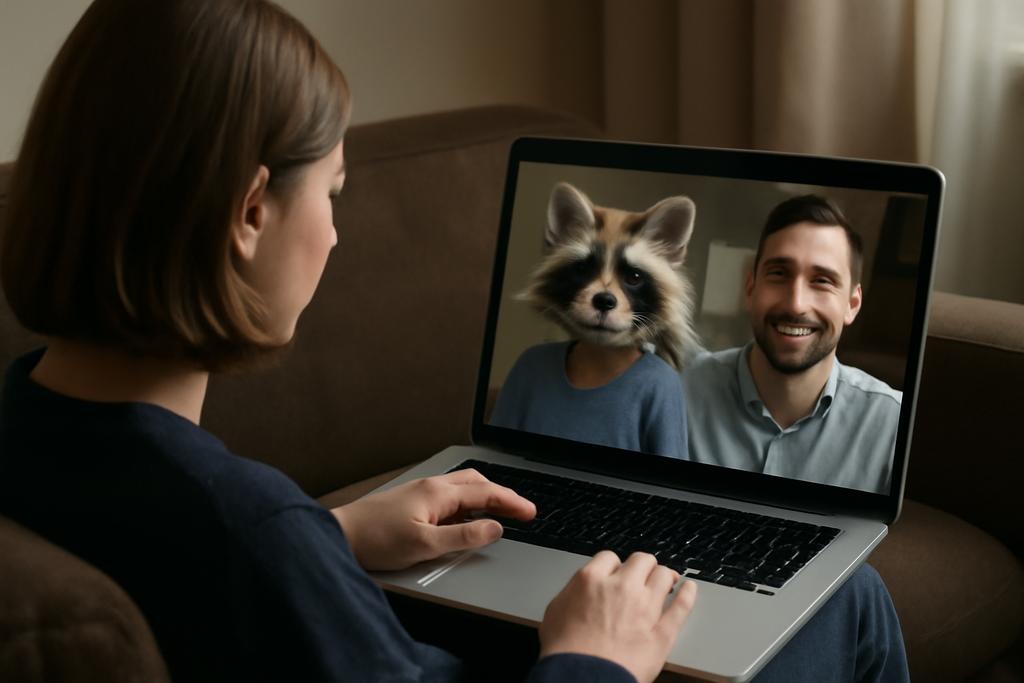In the ever-expanding digital world, avatars have become our visual proxies, representing us in virtual meetings, online games, and social media spaces. But have you ever stopped to consider whether the human-likeness of your avatar could be influencing your emotional state and how others perceive you?
New research from the University of Bremen suggests that the answer is a resounding yes. In a study led by Shiyao Zhang, Omar Faruk, Robert Porzel, Dennis K¨uster, Tanja Schultz, and Hui Liu, researchers delved into the subtle yet significant ways that avatar design impacts both emotion perception (how we interpret emotions displayed by the avatar) and emotion elicitation (how the avatar makes us feel).
The Uncanny Valley and Beyond
The study’s findings touch upon a well-known concept in aesthetics: the “Uncanny Valley.” This theory posits that as artificial representations of humans become increasingly realistic, they evoke a sense of unease or even revulsion in viewers. Think of those hyper-realistic CGI characters that just don’t feel quite right. The researchers wondered if this phenomenon extended to the realm of avatars and emotional communication.
To explore this, the team created a series of videos featuring avatars with varying degrees of human-likeness. These included a realistic human avatar, a raccoon avatar (representing moderate human similarity), and a banana avatar (as a highly abstract representation). Participants watched these avatars express six basic emotions: anger, disgust, fear, happiness, sadness, and surprise. After viewing each video, participants were asked to identify the emotion displayed by the avatar and rate their confidence in their judgment. They were also asked to report how the avatar made them feel and their confidence in that emotional assessment.
The results revealed a fascinating interplay between avatar design and emotional response. Surprisingly, the human avatar didn’t always come out on top. In some cases, it even elicited more negative emotional responses from viewers, aligning with the Uncanny Valley effect.
“High human-likeness avatars, such as human avatars, tend to elicit more negative emotional responses from users,” the authors noted in their paper, “a phenomenon that is consistent with the concept of Uncanny Valley in aesthetics, which suggests that closely resembling humans can provoke negative emotional responses.”
The Power of Cuteness
So, if hyper-realism isn’t the key, what is? The study suggests that other factors, such as the perceived “cuteness” of an avatar, can play a significant role. The raccoon avatar, with its moderate human similarity and inherently adorable features, often had a positive influence on emotion perception. It seemed to bridge the gap between realism and relatability, allowing viewers to connect with the avatar’s emotions more easily.
In a follow-up study, the team expanded the avatar selection to include a pig and a shark, further exploring the spectrum of human-likeness and perceived cuteness. The shark avatar, despite its less human-like features, also tended to elicit more happiness in viewers. This highlights the idea that emotional connection isn’t solely dependent on replicating human appearance. It can also be fostered through charm, playfulness, and other non-realistic qualities.
Decoding the Emotions
The researchers also analyzed which emotions were most easily recognized across different avatar types. Interestingly, surprise and anger tended to be identified with greater accuracy than other emotions like fear and sadness. However, there were also instances of misinterpretation. For example, the banana avatar’s expressions of surprise were sometimes confused with fear, suggesting that its high level of abstraction made it more difficult to decipher nuanced emotional cues.
One particularly intriguing finding was the shift in emotional perception induced by certain avatars. Raccoon avatars often shifted viewers’ perceptions from negative to positive emotions, while human avatars sometimes did the opposite. This suggests that the inherent characteristics of an avatar can subtly influence how we interpret the emotions it conveys.
The team observed that the pig avatar, with its naturally sad facial expression, was more likely to evoke negative emotions, regardless of the emotion it was trying to express. This highlights how an avatar’s default appearance can shape our emotional response, underscoring that it’s not just about what the avatar *does*, but also what it *is*.
Why This Matters
These findings have significant implications for a wide range of applications. In business settings, choosing the right avatar could enhance communication and build rapport with clients or colleagues. In counseling or therapy, an avatar could create a safe and supportive environment for patients to explore their emotions. Even in online games and social media, selecting an avatar that resonates with your personality and desired emotional expression could enhance your overall experience and how others perceive you.
“Our findings can help choose the appropriate avatar for different use scenarios, such as live streaming, games, psychological intervention, commercial promotion, and other human-computer interaction scenarios,” the researchers said. “A suitable avatar may affect the user’s emotional and psychological state, and proper induction can achieve the purpose of interaction more efficiently.”
Beyond Human-Likeness
The study also points to areas for future research. The researchers suggest exploring how other avatar characteristics, such as facial width and the size and visibility of facial features, impact emotional communication. They also note that virtual avatars may rely less on conveying emotions through the eyes, which could have a significant influence on how people recognize emotions.
Additionally, the research team highlighted the importance of considering cultural factors in avatar design. They observed that the human avatar options in the software they used tended to lean towards Western facial characteristics, potentially creating usability challenges for users with different facial features.
Ultimately, this study underscores the importance of being mindful of the avatars we choose to represent ourselves in the digital world. It’s not just about finding an avatar that looks cool or trendy. It’s about understanding how our avatar’s design can influence our own emotions and how we connect with others. So, the next time you’re creating a virtual persona, consider the power of cuteness, the perils of the Uncanny Valley, and the subtle ways that your avatar might be shaping your digital life.










